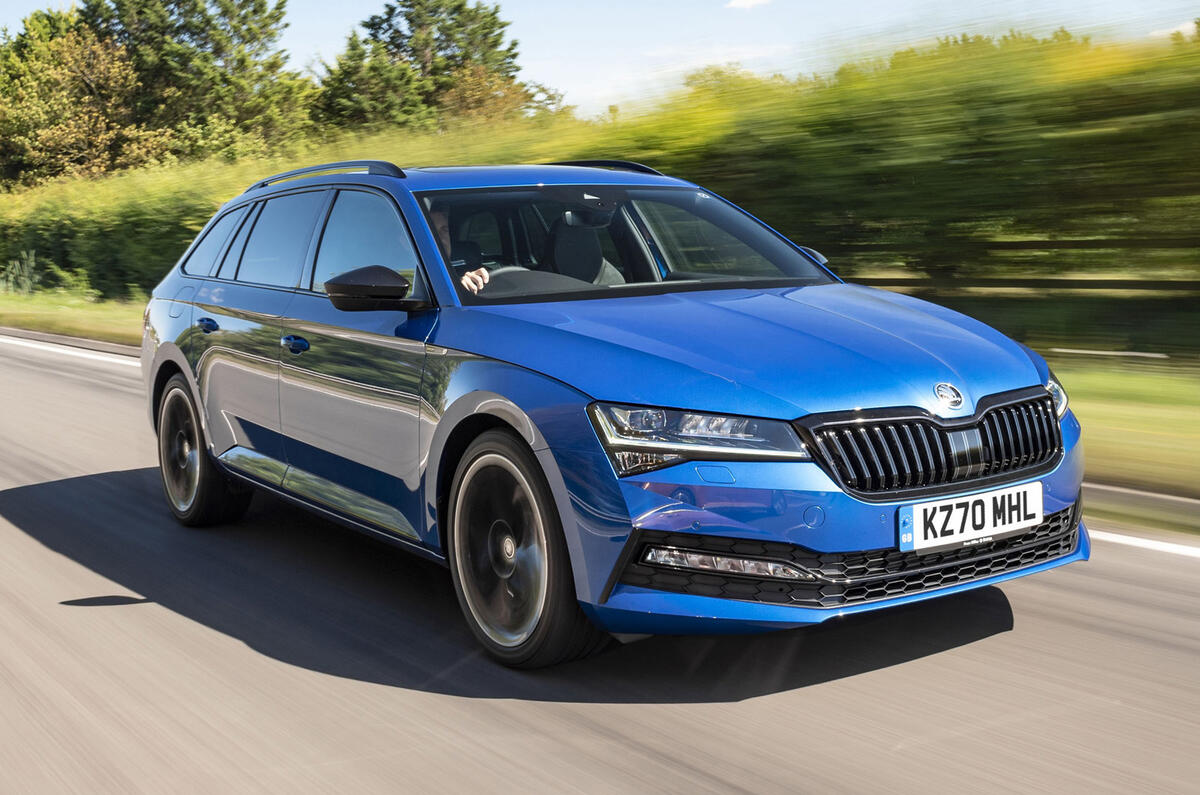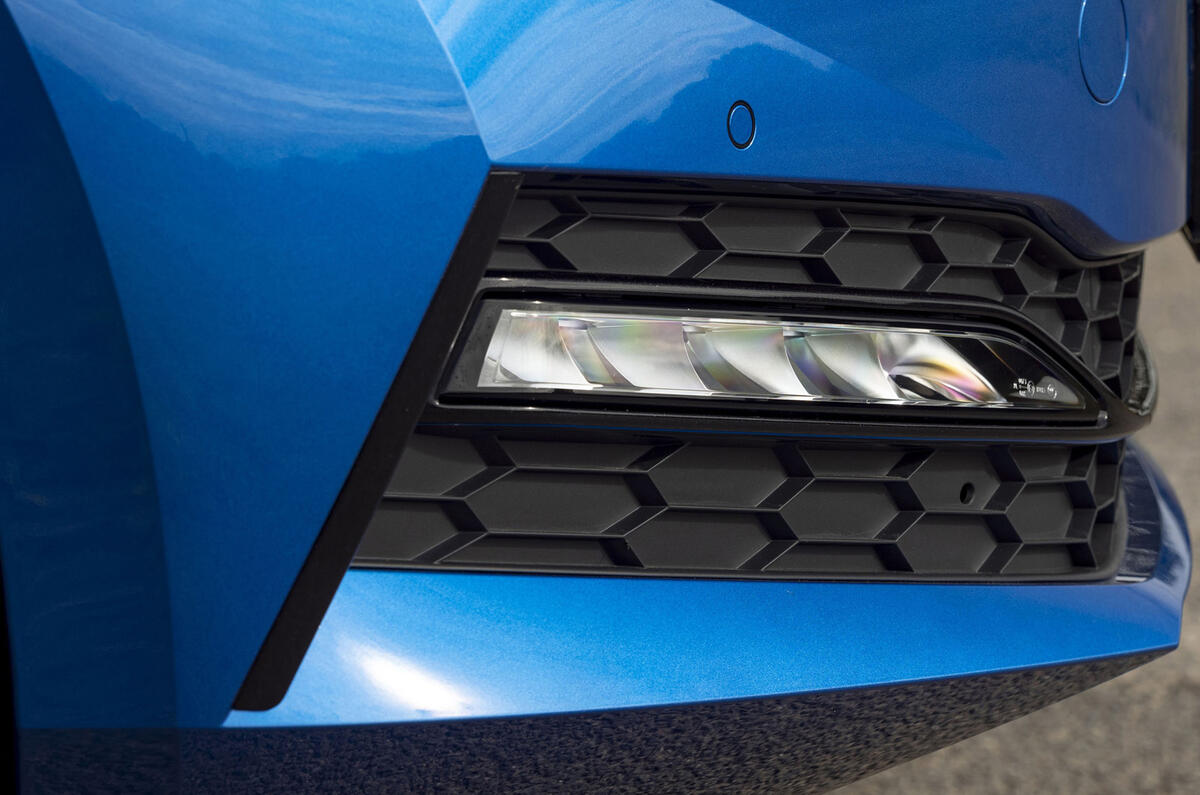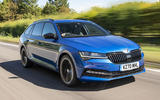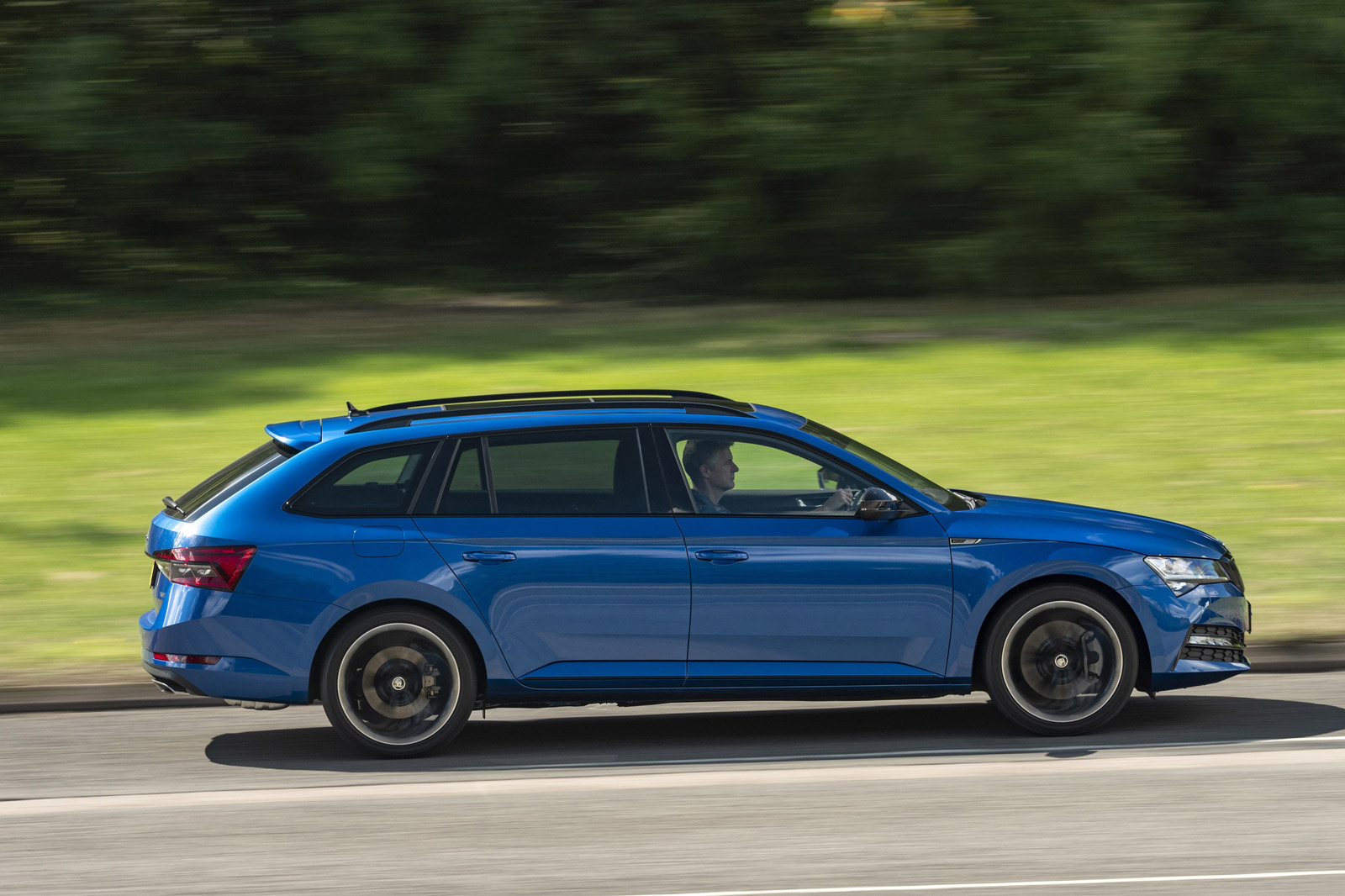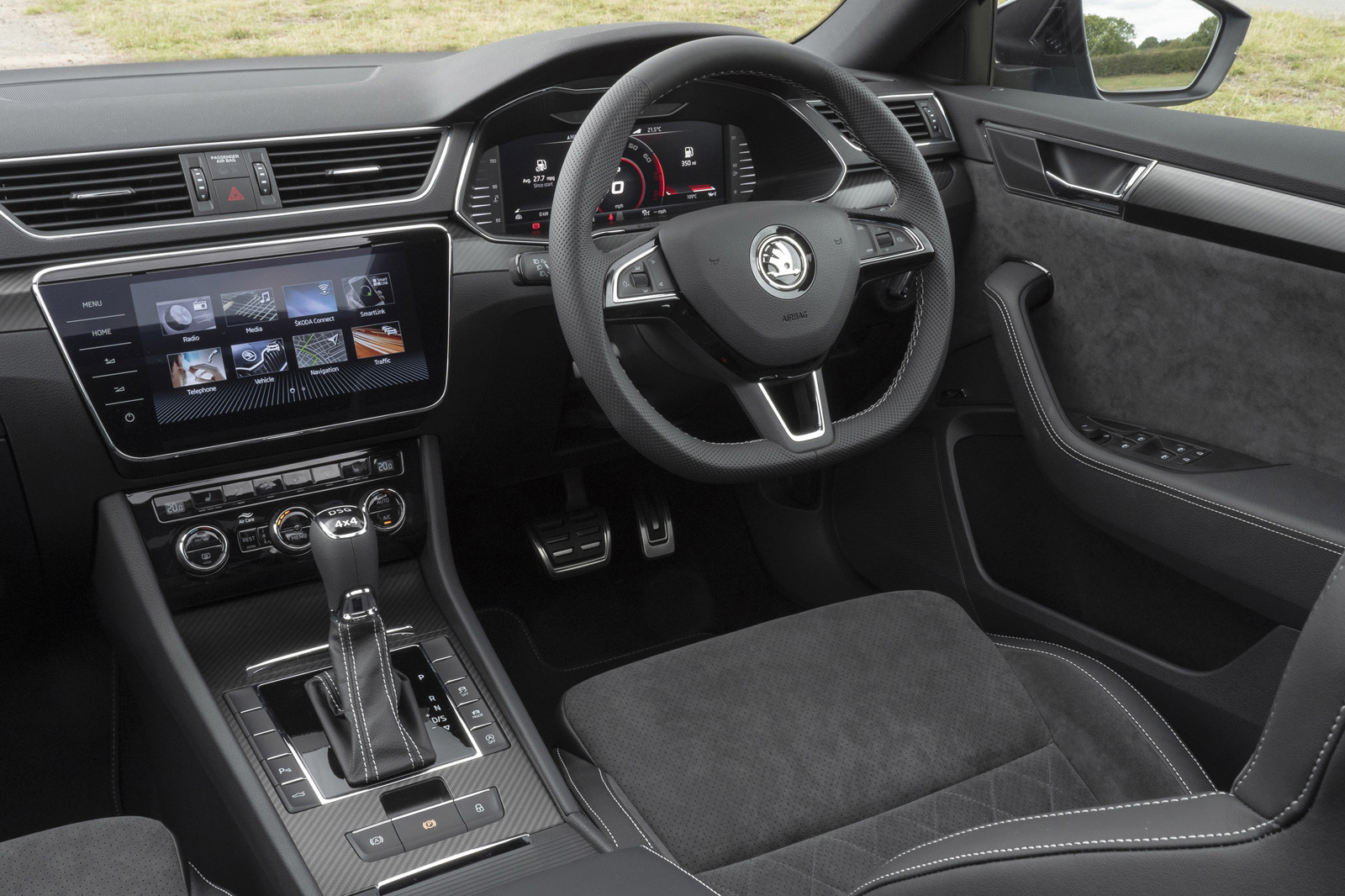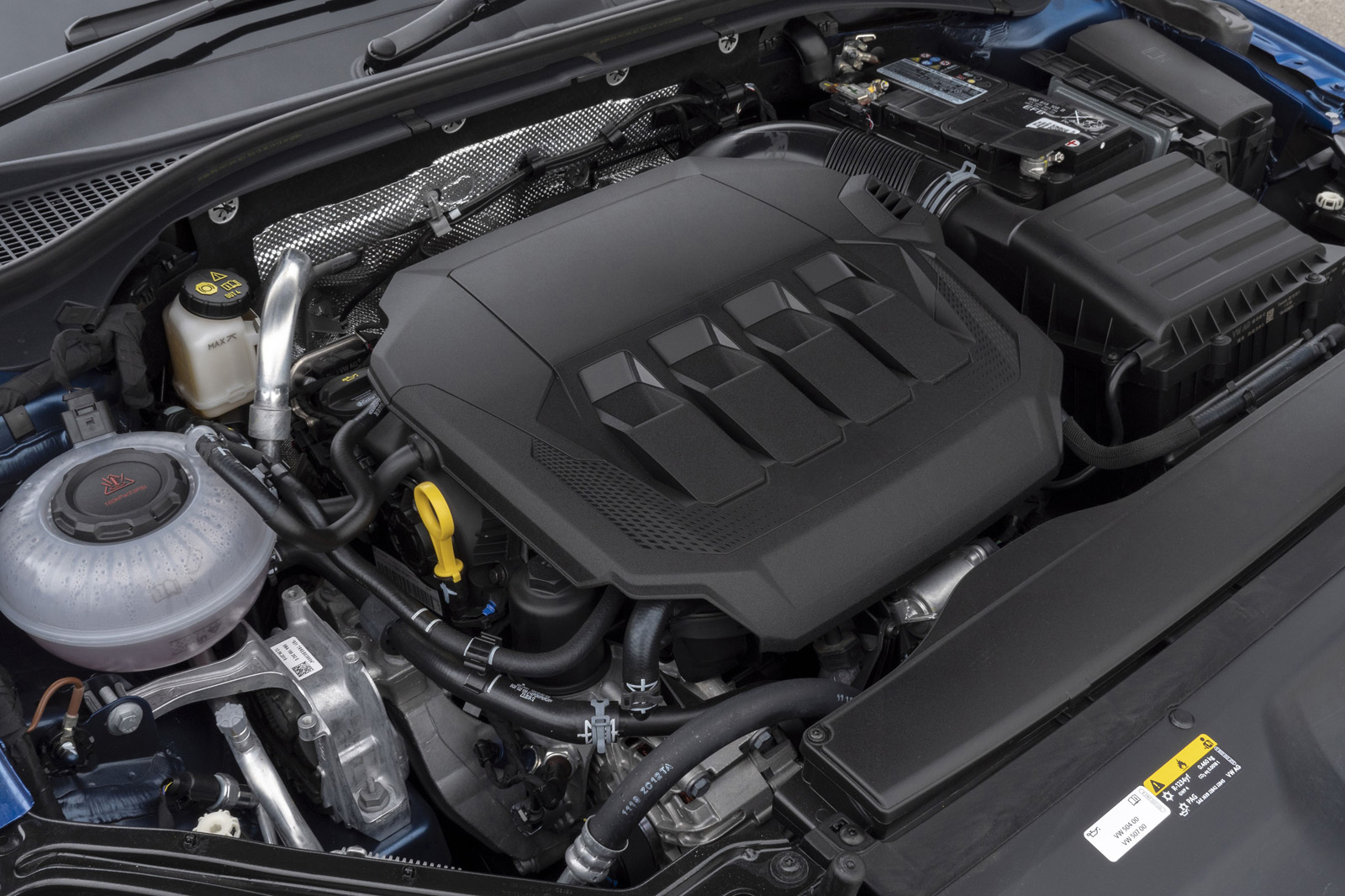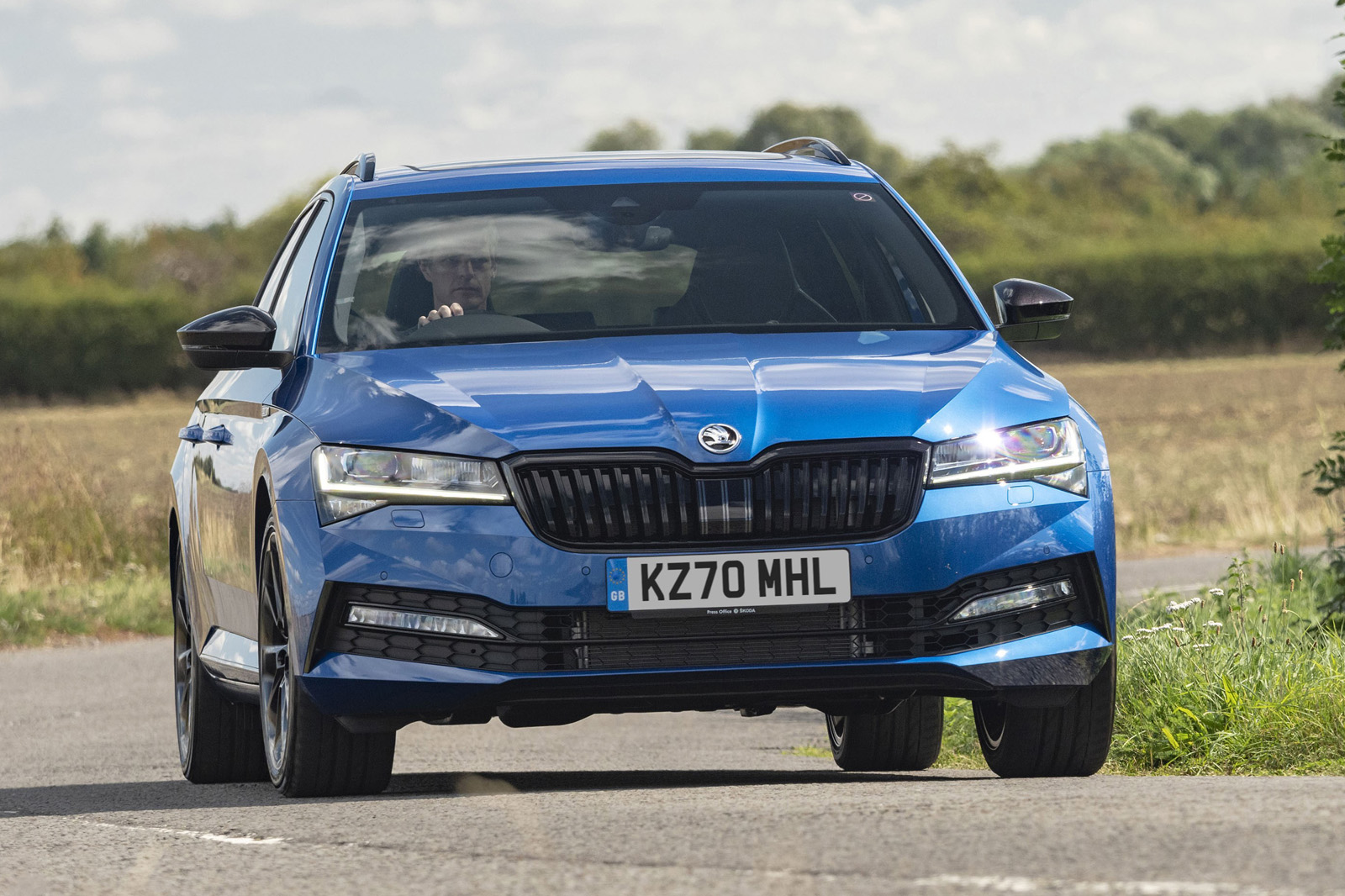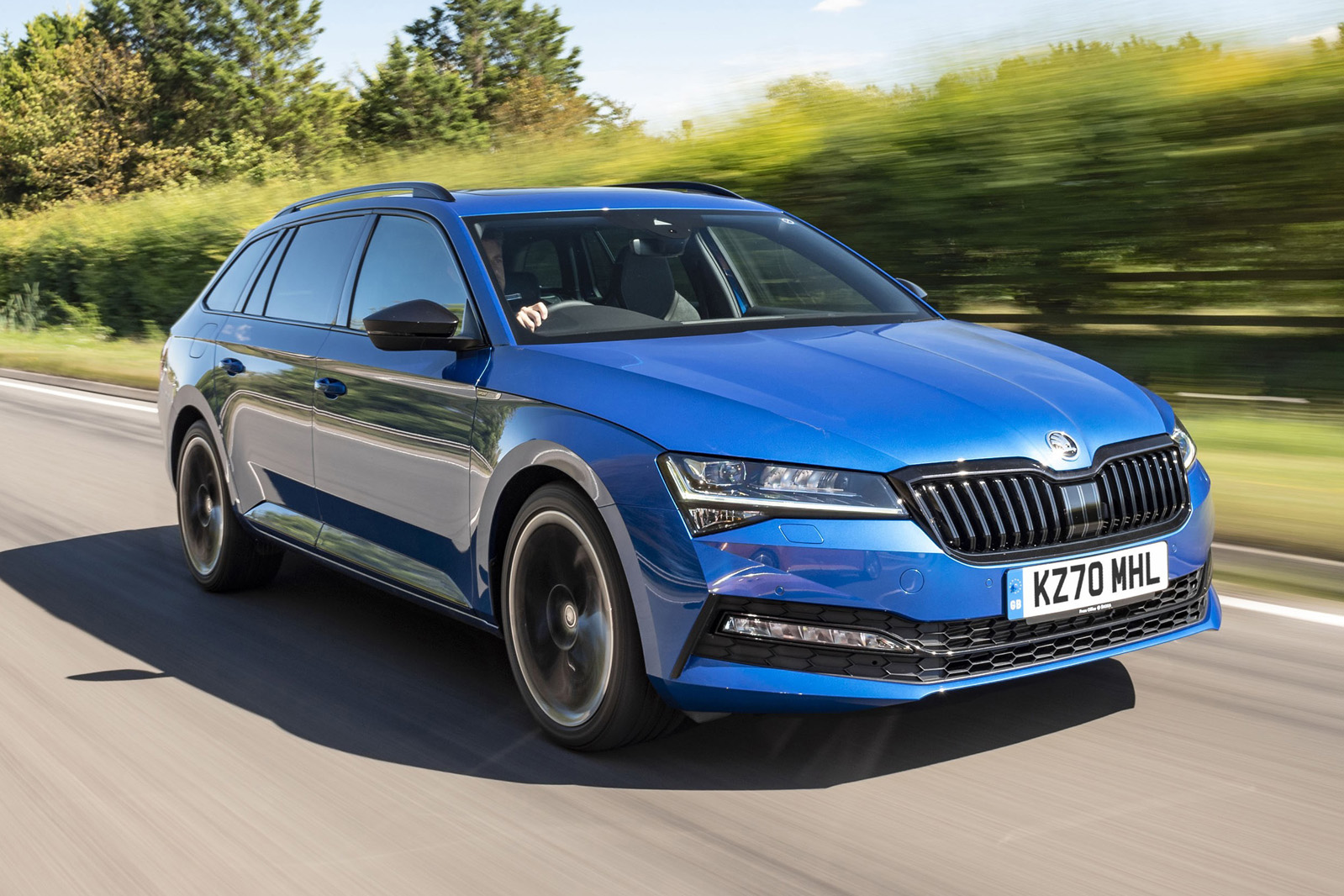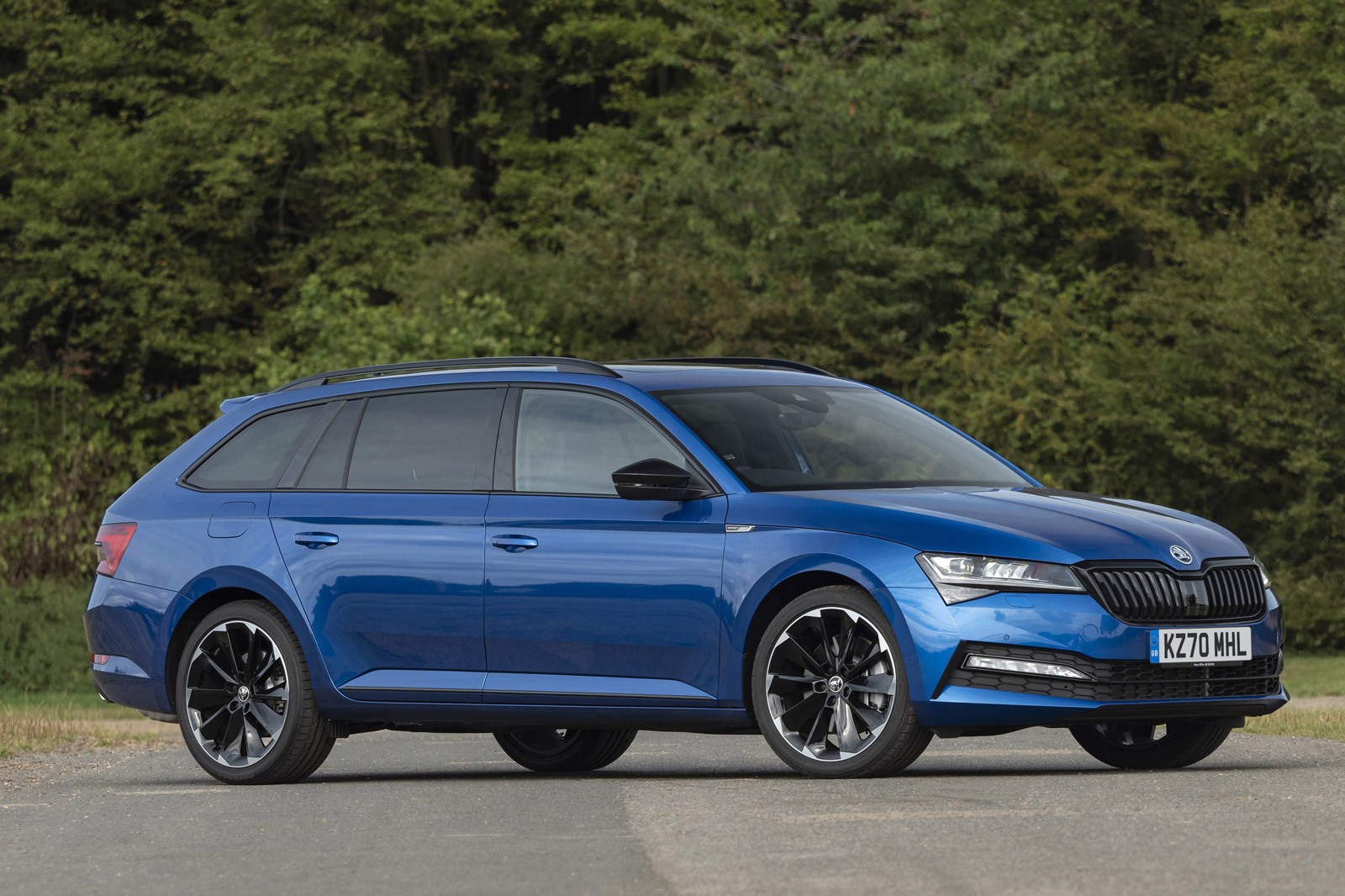Credit must be given to Skoda for making the Superb’s cabin an upmarket, well-equipped and materially pleasing place in which to travel, but your primary motivator for buying the car is still likely to be space.
In either hatchback or estate bodystyles, this is a big family car in the truest sense. The previous version had celebrated quantities of leg room and boot space, but this one emphatically completes the picture.
Although previous Superbs have been long but disproportionately narrow cars, our tape measure confirms the presence here of a wider interior across the second row of seats than either a Ford Mondeo or a Volkswagen Passat – both rivals deserving recommendation as relatively spacious models.
Better still, the Superb wipes the floor with the Ford on back-row leg and head room, to the tune of 50mm in both cases.
In the cargo bay – and never has the term been more accurately applied to a volume-brand estate car – you’ll find significantly more carrying space than those rivals, the Skoda’s advantages measurable in inches rather than millimetres. The hold is both long and deep. You get up to 820mm of loading height, whereas a Mondeo wagon provides fully 120mm less.
As for width, the Superb’s load bay could actually be more generous, but removing the covers on the two side cubbies just inside the main aperture would allow you easily to accommodate a couple of sets of golf clubs crossways.
But here’s the catch: all that space could have been made even more usable. Amazingly, on all Superbs, remote seatback release latches at the boot opening is an optional extra, while cargo netting, a retractable parcel shelf and variable boot floor are options on all grades of the estate. A powered tailgate is optional on SE models but standard on SE L, Sportine Plus and Laurin & Klement trimmed cars, which also gets ‘Virtual Pedal’ hands-free opening that uses a motion sensor under the rear bumper to detect a waggling foot.
The folding second-row seatbacks are split 40/60 – the wrong way around, we’d argue, for optimal carrying practicality in a right-hand-drive car – and a 40/20/40 split isn’t offered on the options list. There’s also nowhere on board to stow the load bay cover once you’ve removed it.
All of which, for us, takes the edge off the Superb’s practicality score. Our test car’s load bay had handy carrying hooks near the back of the car, a 12-volt power supply, a battery-powered torch and some clever flexible plastic load bay dividers that velcro to the boot floor – nice touches, but you’d swap all of them for just a couple of items from the preceding list as standard kit.
Skoda Superb trim levels explained
As for the standard equipment you get on the Superb range, there are five trims to choose from. Entry-level SE models come with 17in alloy wheels, LED headlamps, rear LED lights, tinted rear windows and front and rear parking sensors, plus electrically adjustable and heated wing mirrors and autonomous emergency braking. Inside there is dual zone climate control, manually adjustable front seats, a cooled glove box and Skoda's Bolero infotainment system complete with a 8.0in touchscreen display, DAB radio, Bluetooth, and USB connectivity. Crucially, Apple CarPlay and Android Auto are also present thanks to the brand’s Smart Link connection.
Next rung up the ladder is the SE Technology, which is primarily aimed at the fleet market. Visually identical to the SE, it adds travelling rep favourites including the 8.0 Amundsen infotainment with sat-nav, privacy tint for the rear windows and leather trimmed and heated seats.
Upgrade to the SE L trim and you’ll find 18in alloy wheels, adaptive cruise control, two umbrellas that slide out of the front door panels and LED matrix headlamps with scrolling indicators. There’s also keyless entry and start, and a powered tailgate.
The racy Sportline Plus models effectively mirror the SE L for equipment but add a sporty bodykit, 19in alloy wheels, Alcantara upholstery, three-spoke steering wheel and a 9.2in Columbus touchscreen infotainment system complete with ‘Performance Monitor’.


